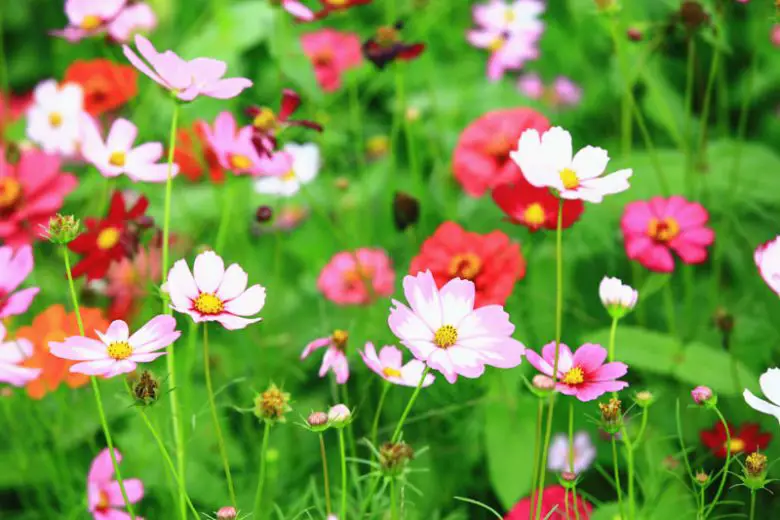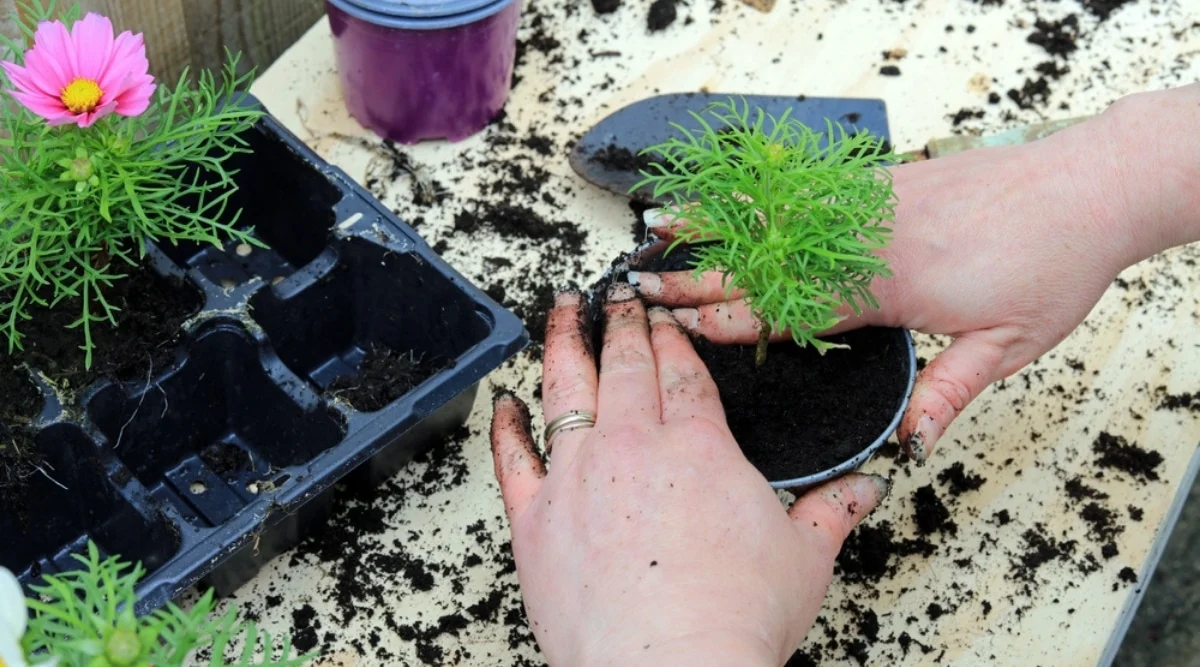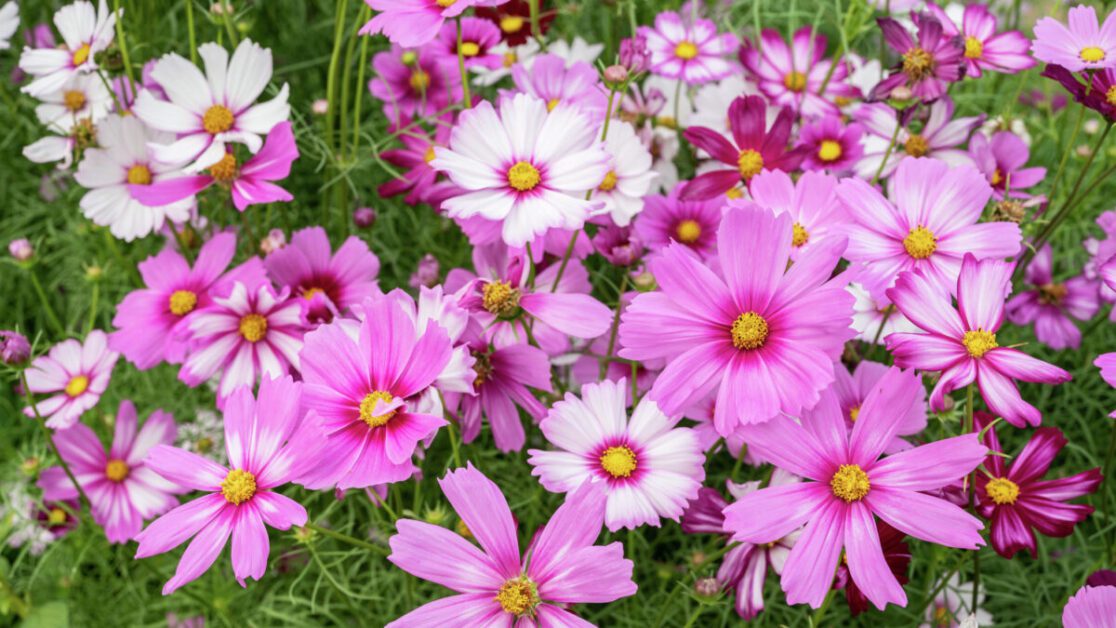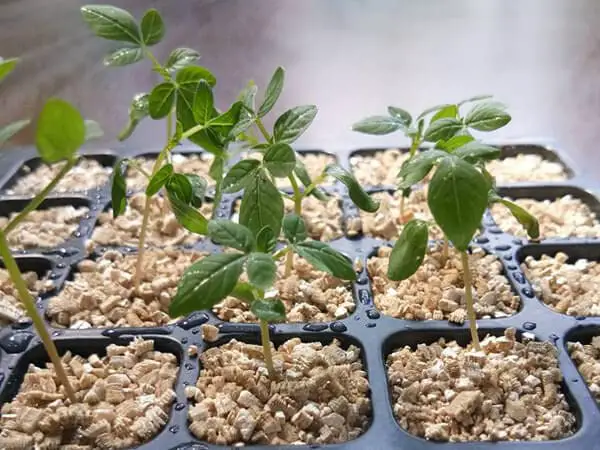Cosmos Flower Care: Planting & Nurturing Guide
How to Choose the Right Location for Cosmos Flowers
When selecting the ideal location for planting cosmos flowers, it is essential to consider their sunlight requirements. Cosmos flowers thrive in full sun, needing at least six to eight hours of direct sunlight daily for vigorous growth and abundant blooms. Therefore, choose a spot in your garden that receives ample sunlight throughout the day to ensure the optimal development of your cosmos plants.

Moreover, it is crucial to assess the soil drainage in the chosen location for your cosmos flowers. These plants prefer well-draining soil to prevent waterlogging, as excessive moisture can lead to root rot and other issues. To enhance drainage, consider amending the soil with organic matter such as compost or perlite, especially if you have clayey or compacted soil in your garden. By selecting a sunny spot with well-draining soil, you are setting the stage for your cosmos flowers to flourish and bring beauty to your outdoor space.
Understanding the Soil Requirements for Cosmos Flowers
Cosmos flowers are known for their adaptability and ability to thrive in various soil conditions. However, to ensure optimal growth and blooming, it’s essential to understand the soil requirements for these vibrant plants. Cosmos flowers prefer well-draining soil with a slightly acidic to neutral pH level. Sandy or loamy soil types are ideal for promoting healthy root development and preventing waterlogging, which can lead to root rot.
When preparing the soil for planting cosmos flowers, incorporating organic matter like compost or aged manure can improve the soil’s structure and fertility. This enriches the soil with essential nutrients, encourages beneficial microbial activity, and helps retain moisture without becoming waterlogged. Additionally, avoid heavy clay soils that can hinder root growth and drainage, ultimately affecting the overall health and vigor of your cosmos flowers.
The Best Time to Plant Cosmos Flowers
For optimal growth and blooming, it is essential to plant cosmos flowers at the right time. Cosmos flowers thrive in warm weather and do best when planted after the last frost has passed in the spring. This timing allows the soil to warm up sufficiently, providing a conducive environment for seed germination and robust plant development.
Planting cosmos flowers too early, while the soil is still cold, can lead to poor germination rates and stunted growth. Conversely, delaying planting too late into the season may limit the time available for the plants to establish themselves before the onset of colder weather. By timing the planting of cosmos flowers just right, you can set them up for success and enjoy a vibrant display of colorful blooms throughout the growing season.
Step-by-Step Guide to Planting Cosmos Flowers
When planting Cosmos flowers, it is crucial to choose a location that receives full sunlight. These vibrant blooms thrive in bright, direct sunlight for most of the day. Select a spot in your garden that gets at least 6-8 hours of sunlight to ensure optimal growth and abundant flowering. Additionally, make sure the location offers well-draining soil to prevent waterlogging, as Cosmos flowers do not tolerate soggy conditions well. Prepare the soil by loosening it up and incorporating organic matter to improve drainage and nutrient retention, providing an ideal environment for your Cosmos flowers to flourish.

Once you have selected the perfect spot, sow Cosmos flower seeds directly into the soil after the last frost date in your area. Scatter the seeds lightly over the prepared soil and gently press them down to ensure good soil contact. Although Cosmos flowers are resilient and can adapt to various soil types, they prefer moderately fertile soil with a slightly acidic to neutral pH level. Water the seeds gently after planting and continue to keep the soil moist but not waterlogged until germination occurs. With proper care and attention during the planting process, you can look forward to a colorful display of Cosmos flowers gracing your garden in no time.
Watering Tips for Healthy Cosmos Flowers
To ensure healthy growth and vibrant blooms, proper watering is essential for cosmos flowers. These resilient plants prefer well-draining soil that is kept consistently moist but not waterlogged. Watering in the morning allows the plants to absorb moisture before the heat of the day, reducing the risk of fungal diseases. Aim to water at the base of the plants to avoid wetting the foliage, which can lead to mildew and other issues.
During periods of dry weather or drought, increase the frequency of watering to keep the soil consistently moist. A general guideline is to provide about 1 inch of water per week, adjusting based on weather conditions and soil moisture levels. Observing the cosmos flowers for signs of wilting can also indicate when they need a drink. Remember, it’s better to water deeply and less frequently than to water shallowly and often, as this encourages the plants to develop deep root systems for better drought tolerance.
Fertilizing Techniques for Thriving Cosmos Flowers
To ensure that your cosmos flowers thrive and produce stunning blooms, it’s essential to provide them with the right nutrients through proper fertilization techniques. Cosmos flowers are generally light feeders, so they do not require heavy fertilization. A balanced fertilizer with equal parts of nitrogen, phosphorus, and potassium is ideal for promoting healthy growth and vibrant blooms. Look for a fertilizer with an N-P-K ratio of 10-10-10 or similar to meet the nutritional needs of your cosmos flowers.
When fertilizing cosmos flowers, it’s crucial to avoid overfeeding, as excess nutrients can lead to lush foliage but fewer blooms. To prevent this, apply a diluted liquid fertilizer every 4-6 weeks during the growing season. Water the plants before fertilizing to ensure that the nutrients are absorbed effectively. Additionally, consider incorporating organic matter into the soil, such as compost or well-rotted manure, to provide a slow-release source of nutrients for your cosmos flowers. By following these fertilizing techniques, you can support the health and beauty of your cosmos flowers throughout the growing season.
Pruning and Deadheading Cosmos Flowers
Proper pruning and deadheading are essential practices for maintaining the health and vigor of your cosmos flowers. Regular deadheading, which involves removing faded or wilting flowers, encourages the plant to redirect its energy into producing new blooms rather than setting seeds. This simple task not only prolongs the blooming period but also promotes a more abundant display of colorful flowers throughout the season. Furthermore, deadheading helps prevent the cosmos plant from self-seeding excessively, which can lead to overcrowding and competition for resources.
When it comes to pruning cosmos flowers, it is important to focus on removing any damaged, diseased, or overcrowded stems to enhance air circulation and light penetration within the plant. This process not only improves the overall aesthetic appeal of the cosmos plant but also reduces the risk of mold, mildew, and fungal infections that can thrive in dense foliage. By selectively pruning the cosmos flowers, you can shape the plant to encourage healthy growth and prevent the spread of pests and diseases, ultimately contributing to a flourishing and vibrant garden display.
Dealing with Common Pests and Diseases in Cosmos Flowers
Cosmos flowers can be susceptible to various pests and diseases, which can hinder their growth and overall health. One common pest that gardeners may encounter is aphids. These small, soft-bodied insects can be found clustered on the young shoots and buds of cosmos plants, sucking sap and causing damage. To combat aphids, try using insecticidal soap or a strong blast of water to dislodge them from the plant.
Another potential issue for cosmos flowers is powdery mildew, a fungal disease that appears as a white powdery substance on the leaves. To prevent powdery mildew, ensure proper air circulation around the plants by spacing them adequately and avoiding overhead watering. If the disease does occur, consider using fungicides like neem oil or sulfur to control its spread. Regularly inspecting your cosmos flowers for signs of pests and diseases can help you address any issues promptly and keep your plants healthy.
A table is given below to show some of the pests and diseases that can affect the cosmos flower plant and their solution:
| Pests and Diseases | Solution |
|---|---|
| Fusarium Wilt | – Causes wilting and discoloration of stems and foliage. – Dig up and destroy affected plants to prevent spreading. |
| Powdery Mildew | – Fungus forms a white coating on leaves. – Improve ventilation and provide bright light. – Water in the day to allow foliage to dry. – Use horticultural fungicide if needed. |
| Bacterial Wilt | – Causes wilting at the base of stems. – Entire stem and flower become infected. – Dig up and destroy affected plants. |
| Aster Yellows | – Transmitted by leafhoppers. – Cosmos flowers become distorted and stunted. – Yellowed mottling on foliage. – Infected plants should be destroyed. |
| Aphids | – Soft-bodied insects that suck sap from leaves. – Use natural predators like ladybugs, lacewings, and predatory mites. – Spray with water or insecticidal soap. |
Supporting Cosmos Flowers as They Grow
Cosmos flowers are known for their tall, delicate stems that can sometimes benefit from external support as they grow. To ensure the optimal growth and stability of your cosmos plants, consider staking them once they reach a certain height. Using stakes or cages can help prevent the plants from flopping over, especially in windy conditions or when the flowers are in full bloom and heavy with petals.
Another way to support cosmos flowers as they grow is by thinning them out. Crowded plants can become leggy and weak, making them more prone to bending or breaking. By spacing out your cosmos plants adequately and removing any overcrowded stems, you can promote better air circulation and give each plant more room to grow thick and sturdy stems that can support their beautiful blooms.
Tips for Extending the Blooming Period of Cosmos Flowers
To extend the blooming period of your cosmos flowers, deadheading is a crucial practice. By removing spent flowers promptly, you encourage new blooms to form and prolong the overall flowering season. Regular deadheading not only maintains the plant’s attractive appearance but also stimulates continuous blooming throughout the summer and into the fall. Remember to cut the flower stems back to a set of leaves or to the next lateral bud to promote healthy regrowth.
In addition to deadheading, providing your cosmos flowers with adequate nutrition can also significantly impact their blooming duration. Fertilizing the soil with a balanced, water-soluble fertilizer every few weeks can supply the necessary nutrients for robust growth and continuous flowering. Be mindful not to over-fertilize, as this can lead to excess foliage growth at the expense of flower production. Following a regular fertilization routine tailored to the specific needs of cosmos flowers can ensure a prolonged and vibrant blooming period in your garden.
Harvesting Cosmos Flower Seeds for Future Planting
When it comes to harvesting cosmos flower seeds for future planting, timing is crucial for ensuring successful germination and healthy growth in the next growing season. Wait until the flower heads have dried completely on the plant before harvesting the seeds. The seeds should be mature and easy to detach from the flower head. Gently twist or shake the dry flower heads to release the seeds, collecting them in a clean container to avoid any loss.
After harvesting the cosmos flower seeds, it is essential to store them properly to maintain their viability. Place the seeds in a cool, dry, and dark location to prevent moisture buildup and prolong their shelf life. Properly stored cosmos flower seeds can remain viable for several years, allowing you to grow beautiful blooms year after year. Be sure to label the seeds with the date of harvesting and the specific cosmos flower variety to keep track of your collection.

Overwintering Cosmos Flowers
When temperatures start to drop and the frosty chill of winter sets in, it’s important to consider how to care for cosmos flowers during the colder months. Cosmos flowers are annual plants, meaning they complete their life cycle in one growing season. However, with proper overwintering techniques, you can potentially extend their beauty into the next year.
One method for overwintering cosmos flowers is to collect the seeds from the spent flowers before the first frost. Store the seeds in a cool, dry place until the following spring, then sow them once the danger of frost has passed. Alternatively, you can take cuttings from your cosmos plants and propagate them indoors during the winter months. This allows you to nurture new plants that can be reintroduced to your garden when the weather warms up again.
Creative Ways to Display Cosmos Flowers in Your Garden
When it comes to displaying cosmos flowers in your garden, there are countless creative ways to showcase their beauty and vibrancy. One idea is to plant cosmos flowers in clusters of different colors to create a striking visual impact. By grouping together shades of pinks, whites, oranges, and yellows, you can achieve a stunning display that will catch the eye of anyone passing by. Additionally, incorporating cosmos flowers into mixed borders alongside other garden favorites like zinnias, marigolds, and verbena can add depth and complexity to your garden landscape.
Another imaginative way to display cosmos flowers is by planting them in pots or containers. Whether you choose traditional terracotta pots for a rustic look or modern planters for a contemporary feel, cosmos flowers can thrive in these environments. Placing pots of cosmos flowers strategically around your outdoor space, such as on patios, balconies, or near entryways, can brighten up any area with their cheerful blooms. You can also experiment with different pot sizes and arrangements to create a unique and personalized showcase for your cosmos flowers.
Sharing Cosmos Flowers with Friends and Family
When it comes to sharing the beauty of cosmos flowers with friends and family, there are numerous ways to create memorable experiences. One simple yet heartfelt gesture is to carefully gather a bouquet of freshly bloomed cosmos flowers and present them as a token of appreciation or celebration. The vibrant hues and delicate petals of cosmos flowers are sure to brighten anyone’s day and convey a message of joy and positivity. Additionally, sharing potted cosmos plants can be a thoughtful gift that keeps on giving, as recipients can enjoy the beauty of these flowers in their own homes or gardens.
For those looking to engage in a more interactive sharing experience, hosting a cosmos flower planting or gardening party can be a fun and educational way to involve loved ones in the process. This collaborative activity not only fosters a sense of camaraderie but also imparts valuable knowledge on planting, caring for, and nurturing cosmos flowers. Participants can get their hands dirty, learn practical gardening skills, and take home their own cosmos plants to continue the floral enjoyment. Such gatherings provide a unique opportunity to bond over a shared love for gardening and nature, creating lasting memories and strengthening relationships.
Watch the full video to learn more about growing cosmos flower.
Celebrating the Beauty of Cosmos Flowers in Your Garden
Cosmos flowers are a delightful addition to any garden, boasting an array of vibrant colors and delicate blooms that sway gracefully in the breeze. These enchanting flowers are not only visually captivating but also easy to grow, making them a favorite among gardeners. With their beauty and charm, cosmos flowers bring a sense of joy and whimsy to any outdoor space, creating a picturesque setting that invites admiration and awe.
As you stroll through your garden adorned with cosmos flowers, take a moment to bask in their beauty and appreciate the intricate details of each petal and stem. Whether you opt for the classic white and pink hues or the bold and striking oranges and reds, cosmos flowers never fail to captivate with their simple yet elegant allure. With minimal care requirements and a prolific blooming habit, these flowers offer a delightful way to enhance your garden landscape and revel in the natural splendor they bring.
Can cosmos flowers tolerate full sun?
Yes, cosmos flowers thrive in full sun and require at least 6-8 hours of sunlight each day to bloom beautifully.
How often should I water my cosmos flowers?
Water your cosmos flowers deeply once a week, or more frequently during particularly hot and dry periods. Ensure the soil is moist but not waterlogged.
Do cosmos flowers attract pollinators?
Yes, cosmos flowers are excellent attractors of bees, butterflies, and other pollinators, enhancing biodiversity in your garden.
Can I grow cosmos flowers in containers?
Yes, cosmos flowers can be grown in containers as long as the containers have good drainage and are placed in a sunny location.
Will cosmos flowers reseed themselves?
Yes, cosmos flowers are prolific self-seeders, dropping seeds that can lead to new plants in the following seasons. Be sure to deadhead if you want to control their spread.
How can I prevent pests and diseases on my cosmos flowers?
To prevent pests and diseases on your cosmos flowers, ensure good air circulation, avoid overhead watering, and keep the garden clean from debris and weeds.
Can I use cosmos flowers for cut flower arrangements?
Yes, cosmos flowers make wonderful cut flowers and can be used in bouquets and floral arrangements to bring their beauty indoors.
How do I know when it is time to harvest cosmos flower seeds?
Harvest cosmos flower seeds when the petals have dried up and the seed heads have turned brown. Gently shake the seed heads to collect the seeds.
Can I overwinter cosmos flowers in a cold climate?
Cosmos flowers are annuals and do not survive frost. However, you can collect seeds from your cosmos flowers to plant in the following spring.







